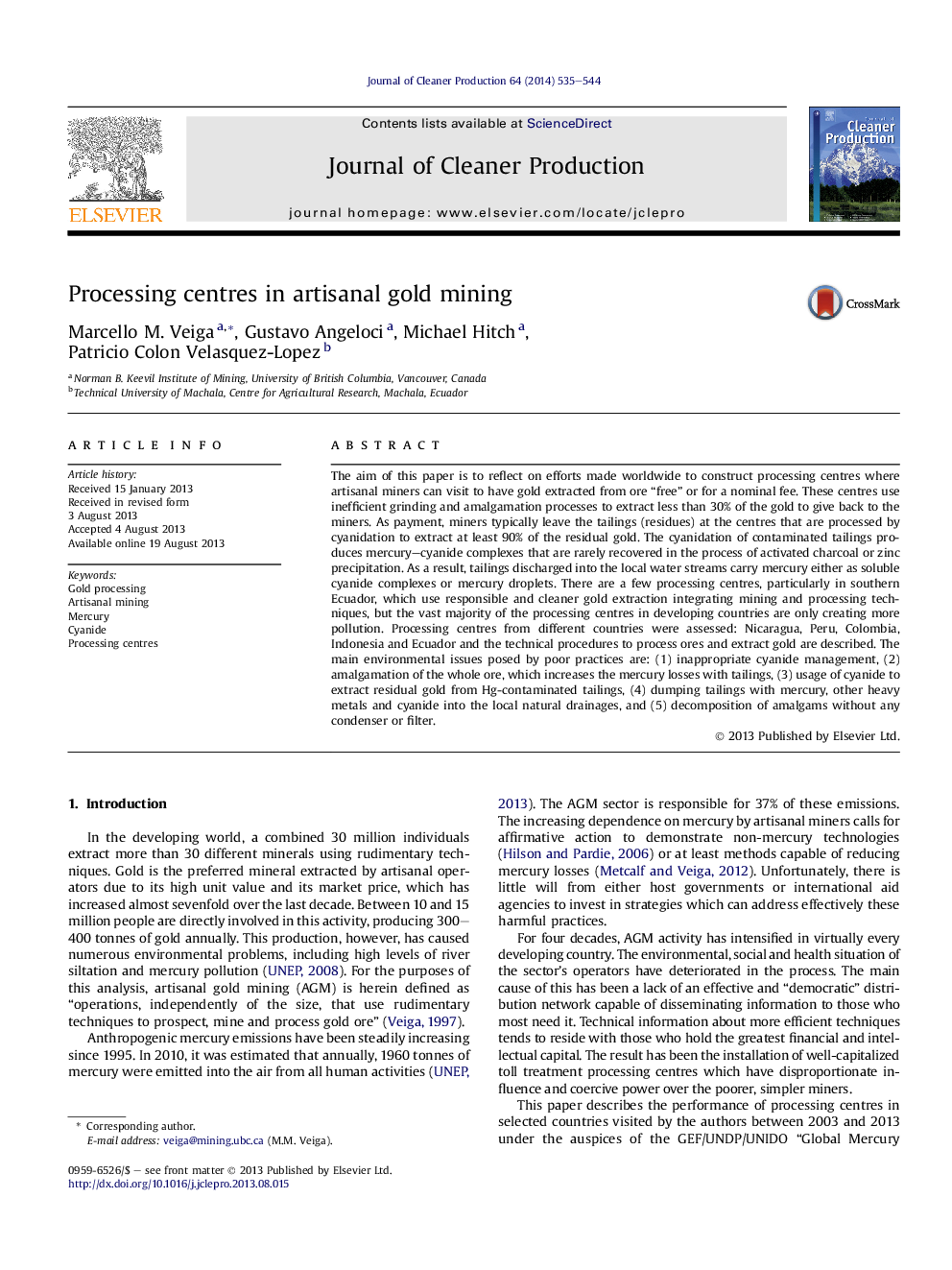| Article ID | Journal | Published Year | Pages | File Type |
|---|---|---|---|---|
| 8107081 | Journal of Cleaner Production | 2014 | 10 Pages |
Abstract
The aim of this paper is to reflect on efforts made worldwide to construct processing centres where artisanal miners can visit to have gold extracted from ore “free” or for a nominal fee. These centres use inefficient grinding and amalgamation processes to extract less than 30% of the gold to give back to the miners. As payment, miners typically leave the tailings (residues) at the centres that are processed by cyanidation to extract at least 90% of the residual gold. The cyanidation of contaminated tailings produces mercury-cyanide complexes that are rarely recovered in the process of activated charcoal or zinc precipitation. As a result, tailings discharged into the local water streams carry mercury either as soluble cyanide complexes or mercury droplets. There are a few processing centres, particularly in southern Ecuador, which use responsible and cleaner gold extraction integrating mining and processing techniques, but the vast majority of the processing centres in developing countries are only creating more pollution. Processing centres from different countries were assessed: Nicaragua, Peru, Colombia, Indonesia and Ecuador and the technical procedures to process ores and extract gold are described. The main environmental issues posed by poor practices are: (1) inappropriate cyanide management, (2) amalgamation of the whole ore, which increases the mercury losses with tailings, (3) usage of cyanide to extract residual gold from Hg-contaminated tailings, (4) dumping tailings with mercury, other heavy metals and cyanide into the local natural drainages, and (5) decomposition of amalgams without any condenser or filter.
Related Topics
Physical Sciences and Engineering
Energy
Renewable Energy, Sustainability and the Environment
Authors
Marcello M. Veiga, Gustavo Angeloci, Michael Hitch, Patricio Colon Velasquez-Lopez,
